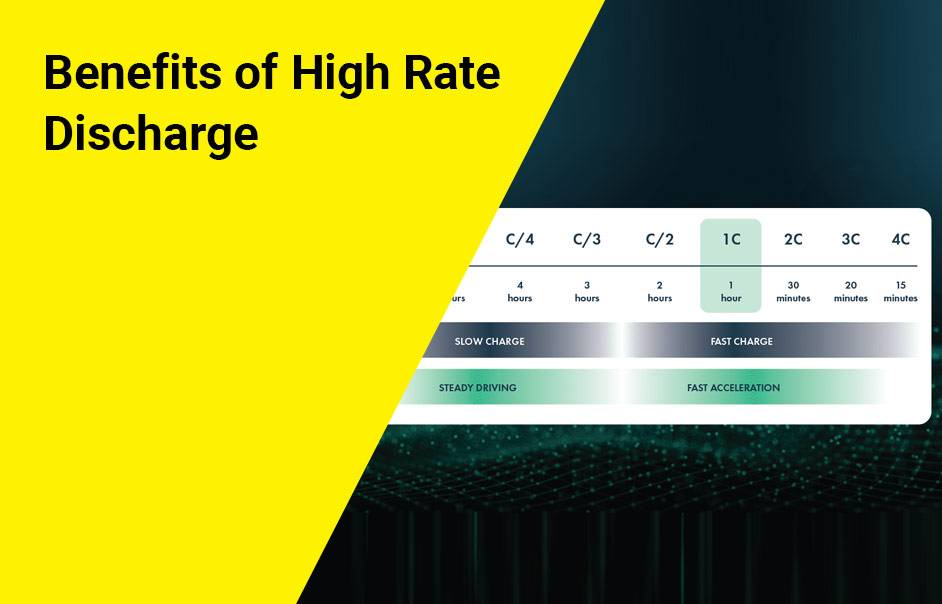Curious about high rate discharge systems and their impressive performance? In this blog post, we’ll explore the secrets behind their functionality and why they’re essential in various applications. Whether you’re an industry expert or just curious, join us on this fascinating journey to uncover how high rate discharge works and its significance in today’s world. Get ready for an enlightening experience!
What is High Rate Discharge?
Understanding High Rate Discharge
- Definition: High rate discharge refers to quickly releasing stored power from a battery or energy storage system, commonly used in applications requiring instant bursts of energy.
- Process: It involves tapping into stored electrical energy and releasing it rapidly, requiring specialized equipment to handle higher currents.
- Applications: High rate discharge finds use in electric vehicles, grid stabilization, backup power systems, and industrial processes, offering increased power output without compromising performance or reliability.
Applications of High Rate Discharge
High rate discharge systems find extensive use across diverse industries for their ability to provide rapid and reliable power delivery. Here are some key areas where these systems are commonly employed:

- Electric Vehicles: High rate discharge facilitates quick charging and discharging of batteries in electric vehicles, extending their driving range and reducing downtime for efficient operation.
- Uninterruptible Power Supply (UPS): UPS systems rely on high rate discharge to ensure a swift response during power outages, allowing critical equipment to continue functioning seamlessly without interruption.
- Telecom Infrastructure: Telecommunication networks utilize high rate discharge systems to maintain uninterrupted connectivity during power failures, ensuring reliable communication services.
- Data Centers: High rate discharge enables rapid transfer to battery backup in data centers, safeguarding sensitive information and preventing costly downtime during power disruptions.
- Renewable Energy Integration: High-rate-discharge-enabled energy storage solutions play a vital role in stabilizing renewable energy generation and balancing grid supply-demand fluctuations.
- Medical Equipment: Medical devices in healthcare facilities require instant access to power during emergencies, making high rate discharge crucial for uninterrupted patient care.
These applications demonstrate the importance of high rate discharge in providing reliable backup power across various sectors.
How Does High Rate Discharge Work?
High rate discharge is a fascinating process vital for many industries. Let’s explore how it operates:
- Rapid Energy Release: High rate discharge involves swiftly releasing a large amount of energy from a power source, achieved through specialized methods like capacitors or batteries designed for high-rate applications.
- Efficient Delivery: When electric current is needed quickly, the power source efficiently delivers stored energy, allowing for intense bursts of power essential for applications like electric vehicles and grid stabilization systems.
- Advanced Design: The effectiveness of high rate discharge depends on the design and construction of the power source. Capacitors and high-rate batteries use low-resistance materials and advanced cell chemistries, optimizing performance under demanding conditions.
Understanding high rate discharge enhances its application across industries, powering innovations like electric cars and bolstering energy backup solutions during peak demands.
Benefits of High Rate Discharge
High rate discharge systems offer compelling advantages for diverse applications. Let’s explore their key benefits:

- Quick and Efficient Power Delivery: High rate discharge ensures rapid power supply, crucial for emergencies or starting critical equipment, minimizing downtime and ensuring uninterrupted operations.
- Long Lifespan and Durability: These systems endure repeated fast charging and discharging cycles without performance degradation, reducing maintenance costs and extending operational life.
- Compact, Lightweight Design: High rate discharge systems are space-efficient and portable, making them easy to install and transport, ideal for applications with limited space availability.
- Reliable Performance in Harsh Conditions: They withstand extreme temperatures and environmental challenges, ensuring consistent power delivery even in harsh settings like telecommunications or military operations.
- Enhanced Energy Efficiency: Compared to traditional batteries, high rate discharge systems offer improved energy efficiency, delivering more power with lower energy consumption, thus reducing operational costs over time.
Factors to Consider Before Choosing a High Rate Discharge System
Before investing in a high rate discharge system, consider these key factors:
- Energy Requirements: Determine your application’s specific energy demands to select a system with suitable capacity and power output.
- Durability and Reliability: Choose a system built to withstand your operating conditions, ensuring uninterrupted power supply when needed.
- Safety Features: Prioritize systems with built-in protections like overcharge prevention and thermal management to ensure safety during operation.
- Battery Chemistry: Understand different battery chemistries and choose one that aligns with your application needs.
- Lifecycle Cost Analysis: Evaluate upfront and long-term costs, including maintenance and efficiency ratings, to make an informed decision.
- Power Conversion Efficiency: Assess how efficiently the system converts stored energy into usable power.
- Manufacturer Reputation: Research reputable manufacturers known for reliable products and excellent customer support.
Selecting the right high rate discharge system requires thoughtful consideration to ensure optimal performance and productivity for your specific application.

